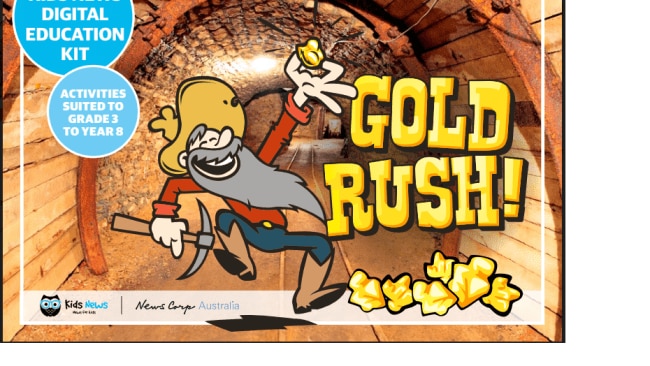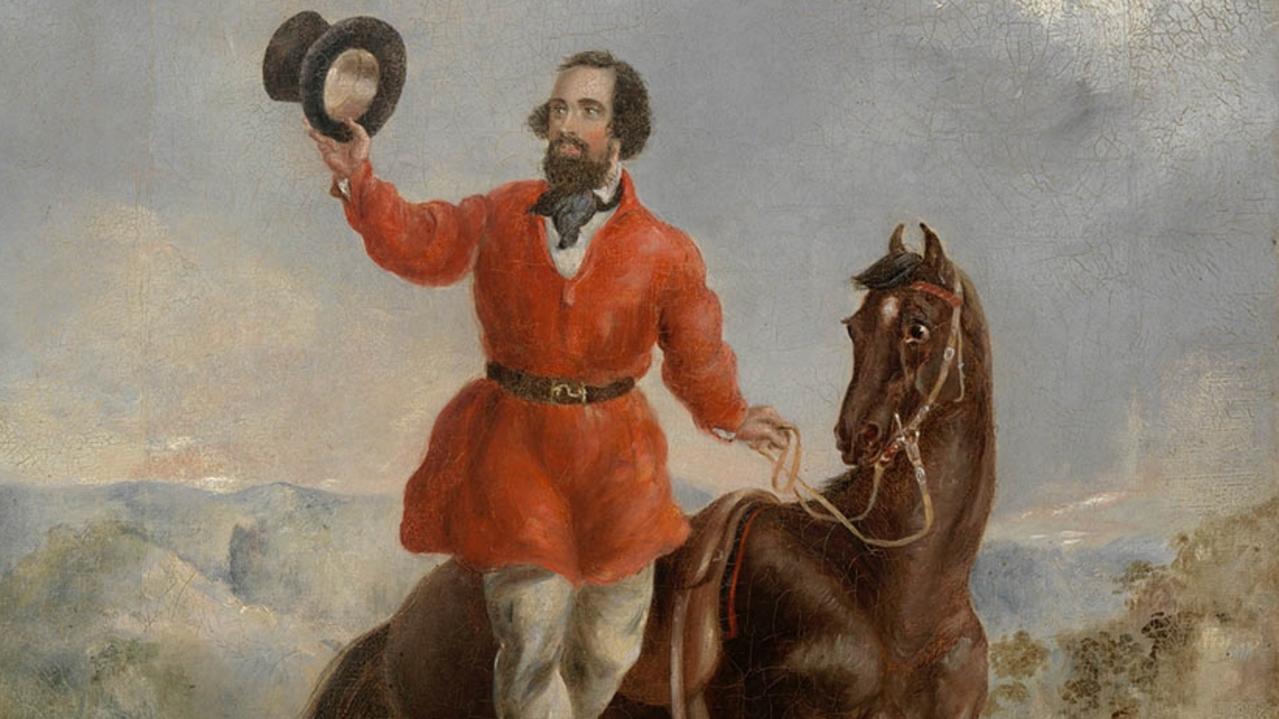Growing up on the goldfields was hard work, but an amazing adventure
FAMILY AND HOME LIFE: Children worked hard and didn’t often go to school. But playtime was fun and if you spent your spare time mining, you could even find some gold

READING LEVEL: GREEN
What busy, exciting places the goldfields must have been. There was always a constant stream of new people to meet. At night it must have seemed like a big holiday campground, with music, dancing, theatre*, new friends to play with and everyone living close together in tents and rough little huts.
Children sometimes struck it rich. If they were patient and looked hard, they could find gold by walking behind the miners and looking through the gravel that fell from their wheelbarrows.
But childhood could also be really hard work. Children of miners helped their parents mine. That meant shovelling rock and gravel, carrying water, panning for gold and rocking the wooden mining cradles.
Adults worked every hour there was daylight, so they needed help with all the everyday jobs too, such as looking after younger siblings*, washing clothes, collecting firewood and carrying water. There was no electricity or piped water into the houses, so although there was the fun of camping, there was also all the inconvenience*.

It was tough to learn to read and write. Not everyone’s parents had been to school and many couldn’t read and write themselves. It took a while after everyone moved to a new goldfield for there to be enough children or a teacher available for a school to be set up. Children often had big breaks between schools and new teachers to get used to all the time. And with all the jobs that needed to be done, there sometimes wasn’t enough time to go to school.
Families usually had to pay the teacher for a child to go to school and they didn’t always have enough money to be able to afford that. Books were rare and it was expensive to buy paper and something to write with. Classes were often held under a tree or in a tent, which sounds like fun, but it must often have felt too hot, cold, rainy, windy or dusty to be comfortable.
Often, a teacher travelled between several settlements, so children only went to school the day the teacher came near where they lived. Later in the Gold Rush, church groups set up schools and the children could go to classes in the church.
By 1880, the government made rules to try to get every child to go to school, but many still had big breaks when they moved or if they had to help their parents.

PLAYTIME
Kids didn’t have a lot of time to play, but when they did, they were used to making do with whatever they had. You can probably imagine some of the ways they spent their playtime: exploring the goldfields and the bush, building cubbies, climbing trees, sword-fighting with sticks, throwing stones at targets, skimming stones across the surface of water, hide and seek and chasey, spinning hula hoops made of cane, flying simple kites made with sticks and old bits of material, playing with animals and pretending to be grown-ups.
Travelling entertainers toured the goldfields with puppet shows and musical instruments.
The luckiest kids had a simple toy, ball or cricket bat to play with, mostly handmade from spare bits and pieces around the goldfields. You’ve probably played with modern versions of some of these yourself. The best thing about them is that none of them needed batteries.

Have you played with these toys or their modern versions?
Knuckles: Sheep knucklebones from the butcher made a great game like jacks. There are lots of ways to play, but most games involve bouncing a ball and picking up knuckles while the ball is in the air, then catching the ball before it bounces again.
Quoits: Rings made of rope. Stand back behind a line and throw the rings onto a wooden peg in the ground. Get more onto the peg than your opponent.
Marbles: So many variations* of games with marbles! Many involve a circle on the ground and some of each person’s marbles in the ring. The aim is to use one of your big marbles to “shoot” your opponent’s marbles out of the ring.

Tea sets: Little cups, plates and teapots for imaginative play.
Skipping ropes: We all know what a skipping rope is and they haven’t changed in hundreds of years. Just like kids at school today, goldfields kids sang chants or rhymes while they skipped to keep to a rhythm. A popular chant was:
Who are you going to marry?
Tinker, tailor, soldier, sailor,
Rich man, poor man, beggar man, thief …

Wooden blocks: Before Lego, children had wooden blocks. You probably had some yourself when you were a baby.
Soldiers, dolls and stuffed toys: You could buy fancy versions in shops but many people in the goldfields were clever at making things. Even kids could carve toys from wood, sew rag dolls from old scraps of material and make fluffy stuffed toys from sheepskins and possum skins.
EXTRA READING
Making money by not mining for gold
FOR ALL GOLD RUSH STORIES, click HERE
GLOSSARY
- theatre: place for live shows
- siblings: brothers and sisters
- inconvenience: difficult or annoying, not convenient
- variations: different versions
LISTEN TO THIS STORY
25 CLASSROOM ACTIVITIES
For 25 classroom activities on this story and much more, go to kidsnews.com.au/goldrush to purchase the Gold Rush workbook for $20 inc GST.
SOURCES
- National Museum of Australia, nma.gov.au
- National Library of Australia, nla.gov.au
- State Library Victoria, slv.vic.gov.au
- State Library of NSW, sl.nsw.gov.au
- SBS, sbs.com.au/gold
- KidCyber, kidcyber.com.au/gold-rush-in-australia
- Growing up on the Australian Goldfields by Kimberley Webber, bit.ly/2nfbbqw
- Sovereign Hill, sovereignhill.com.au and sovereignhilledblog.com

